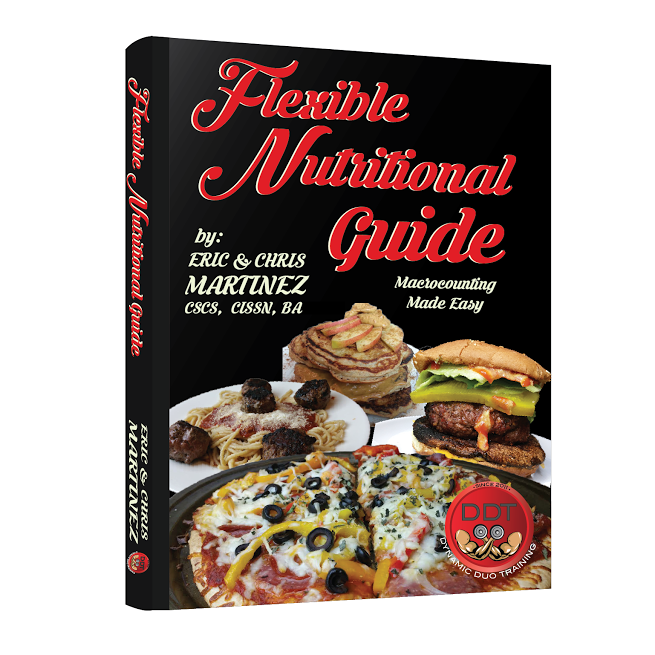DDT Nation! Today we have a great guest post by our friend Taeler De Haes on using Flexible Dieting to overcome an Eating Disorder. If you have been reading our articles and viewing our videos, you know that we are huge advocates of flexible dieting. But we wanted a REAL story from someone that struggles with a good relationship with foods and to have some solid anecdotal evidence that Flexible Dieting really can be a life saver. Without further ado, let Taeler tell her story.
– Chris and Eric
Flexible dieting changed my life.
I’m a 23-year-old peanut butter connoisseur from Dallas.
I started tracking my macros just over two years ago, but that is certainly not where my fitness journey began. Around 12-years-old, I suffered from anorexia. My breakfast was always a protein shake, composed of protein, skim milk and one banana. I remember my lunches in middle school were a can of tuna, yogurt and either an apple or some carrots. I would skip dinner completely and eat a spoonful of peanut butter if I got hungry. That was it. I kept that up for a solid five years. I was stuck in an endless cycle of self-hate, keeping a diary of my food, weighing in every single morning. If the scale was read higher that 88 pounds, I would punish myself with a “liquid diet” consisting of low-sodium V8 for an entire day.
I was afraid of food.
During my eating disorder, I was running seven miles a day, in addition to playing varsity soccer and running for the cross-country team. The older I got, the less I was able to accept my body. Every now and then I would force myself to throw up if I had a “cheat meal,” because I was consumed by guilt.
I stayed alive on 500 calories a day for five years.
My junior year of high school, my mom did what any mom would do and got me a “personal trainer.” She was also a nutritionist and someone who previously suffered from an ED (God forbid I admit I had a problem). I slowly started incorporating carbs back into my diet. When I say carbs, I’m talking about oats, bread, potatoes and brown rice – things like that. This trainer had what she called a “pig out day” once a week where she would literally eat until she was sick, sometimes hitting 4,000 calories in a day.
I went from simultaneously suffering from anorexia and bulimia to binging.
However, I didn’t see it as a problem. My friends were finally happy that I was eating anything. I naturally gained weight, but I was not overweight at all. I was “normal” for my body.
When I turned 16, I got a gym membership to LA Fitness in my area. I took group fitness classes and started lifting weights. I was doing basic total body type workouts, just learning form procedure, but cardio was still my main priority. I never took a rest day. Sundays were my “cheat” days and nothing was off-limits. Monday through Saturday, I would only eat “clean” foods, which as I know now means nothing. There is no definition of “clean.” In this context, I mean nothing processed, sugary or high in fat. I felt so deprived. I kept this cycle up until March of this year. Yes, I started tracking my macros in 2013, but I was not being flexible, at all. I followed the bro-science protocol and was miserable, still never eating over about 1,300 calories for six days a week.
I got a coach and together it was a goal to end my binge eating. I challenged myself to eat one small thing a day that I considered to be a “fear food.” I would eat an Oreo or my favorite childhood cereal. Overtime, I gained strength, both mentally and physically. I gained my happiness back. I had self-control again, every day of the week.
I have been binge-free since March. I no longer have “cheat” days.
Every few weeks, I’ll have an untracked meal of pizza, froyo or my beloved doughnuts, but it is controlled and I have no guilt.
Flexible dieting should be renamed to “flexible nutrition,” because I cannot reiterate enough this is not a diet. It is not a fad. It is not a quick fix. Lastly, it is certainly not magic. It requires patience, diligence and consistency. The more you work with your macros, the better they’ll in turn work for you.
Flexible nutrition is something I will continue for the rest of my life.
The best advice I can give to someone who is thinking about trying flexible nutrition is to really test out your own macros. A good general rule of thumb is one gram of protein per pound you weigh and making sure to consume 15 grams of fiber per 1,000 calories you consume. From there, having higher fats or carbs is up to you and up for play. Sugar is up for discussion, but I stick to under 50 grams a day. You have to know your body before hiring someone to play with it. If you are low on energy and working hard in the gym, don’t let someone keep you in a calorie deficit lower than needed.
Secondly, flexible nutrition is not for everyone and that is okay. Tracking my food does not interfere with my life. It has become second nature. I can look at piece of fruit or chicken and guess how many ounces or grams it is, just like that. I do not bring my food scale to restaurants with me. That’s the flexible part. What is not flexible is consistency. Again, if you are going to track, it must be consistent all the time. Sure, a meal here and there will not hurt you if you go over or under, but the point of flexible nutrition is to fit the foods you love – pizza, burgers and ice cream – into your macros. Yes, you’ll have to do some guessing with your tracking, but trust me, it isn’t hard.
One month ago, I finally did what needed to be done and started a reverse diet using flexible nutrition. Even learning to cope with my binging, I was still eating around 1,400 to 1,500 calories a day with my carbs never going above 150 grams. As someone who lifts six days a week and teaches hours of cardio classes a week, I was at a standstill, but I was too afraid to take the plunge.
My calories are up to nearly 1,800 and I lost a pound just this morning. Aside from the numbers, I’ve gained mental strength. No longer do I feel the need to binge until I’m sick or “punish” myself for eating ice cream. This is a lifestyle change, not a diet. Life is too short to have an unhealthy relationship with food.
Find the balance that works for you and your goals. You are more than just a number.
If you would like to get started on your Fitness Journey using Flexible Nutrition, check out our brand new ebook HERE
About Taeler:

Storyteller. Flexible dieter. Lifter. Doughnut eater. Peanut butter connoisseur.
I’m a 23-year-old from Dallas, currently residing in Columbia, Missouri pursuing my MA degree in investigative journalism at the Missouri School of Journalism. I work for a local NBC affiliate, KOMU 8 News, as an anchor, reporter and producer.
Last summer, I interned at CBS in Washington where I was able to combine my two passions – journalism and fitness – and produce the first mainstream media article on flexible dieting, featuring Layne Norton, Krissy Mae Cagney and other IIFYM’ers.
Aside from reporting, I’m a group fitness instructor, teaching cycling and INSANITY.
When I’m not reporting, lifting or teaching group fitness classes, you can likely find me baking some protein concoction and spending time with friends.
For recipes, workouts and discounts on supplements and peanut butter, feel free to follow me on Instagram @taeler_dehaes.
CHECK US OUT ON:
FACEBOOK:
TWITTER:
YOUTUBE:
INSTAGRAM:
PINTEREST:

